Abstract
This study investigates the course of tuberculosis in a naturally infected badger population, its impact on the population and the risk of spread to other species in the light of capture data and post-mortem findings from 47 tuberculous badgers, stratified by age group and sex, accrued since 1975. The findings are compared with those for 260 badgers from the same population in whom no evidence of infection was detected. Detailed estimates of seasonal variations in bodyweight for uninfected male and female cub, yearling and adult badgers are presented and compared to the weights at post-mortem examination of the tuberculous badgers, in whom poor condition and weight loss were the principal presenting signs. Lesions were seen especially in the lungs and associated lymph nodes, and in the kidneys. Organisms were detected intermittently in faeces, urine, sputum and discharging bite wounds. Infected animals could survive for nearly 2 years and produce cubs successfully.
Full text
PDF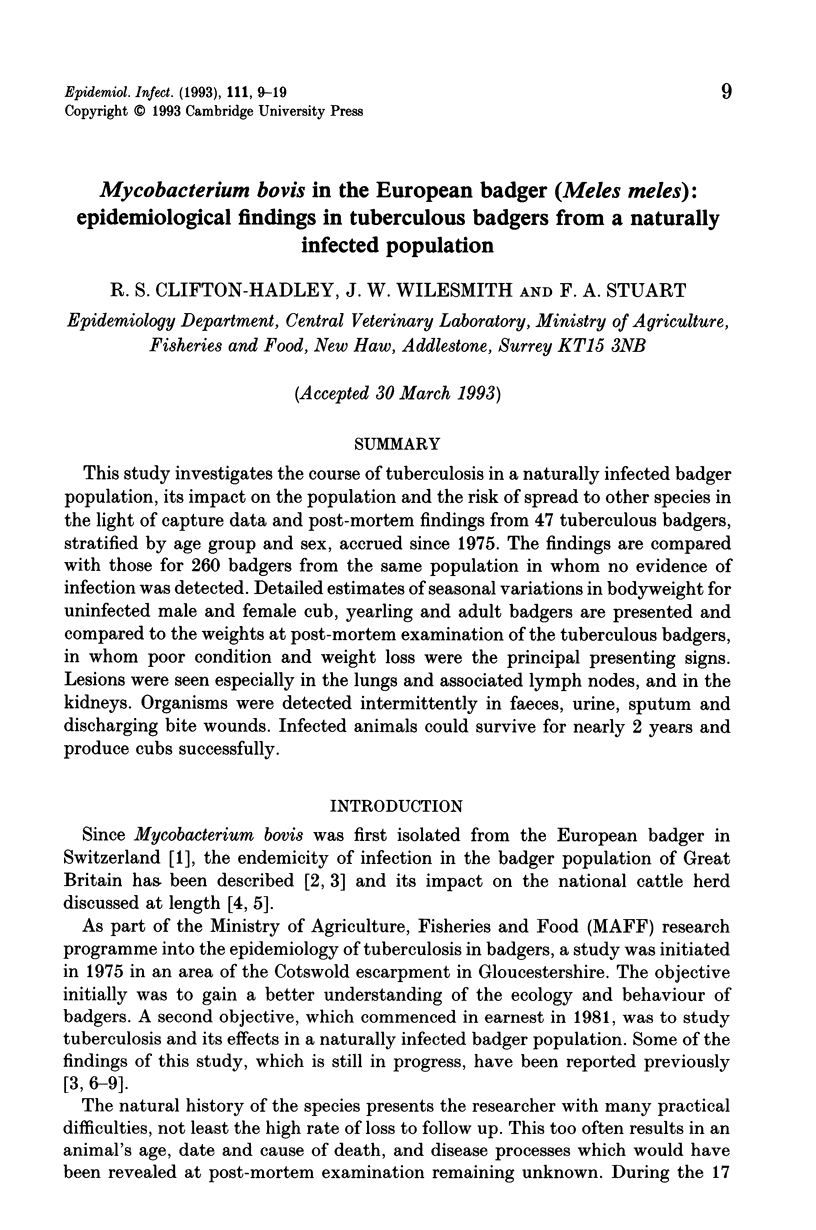
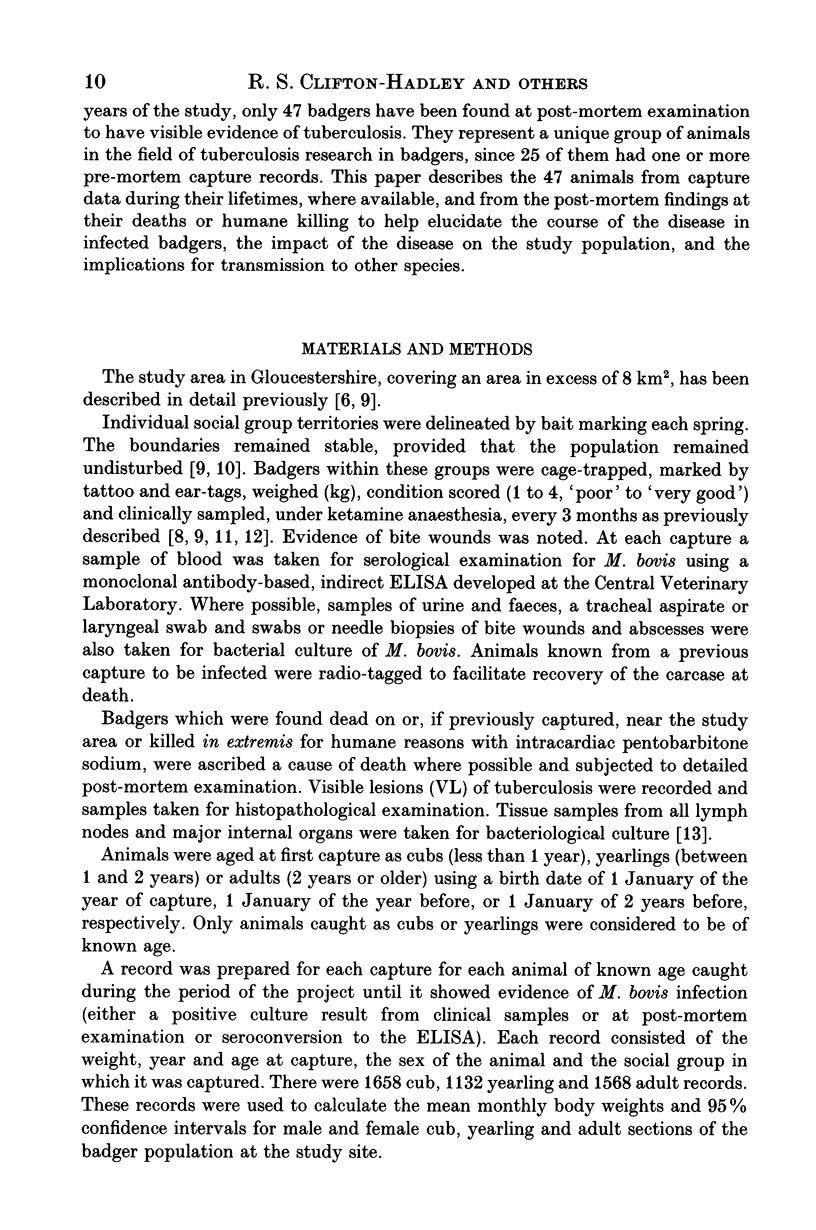
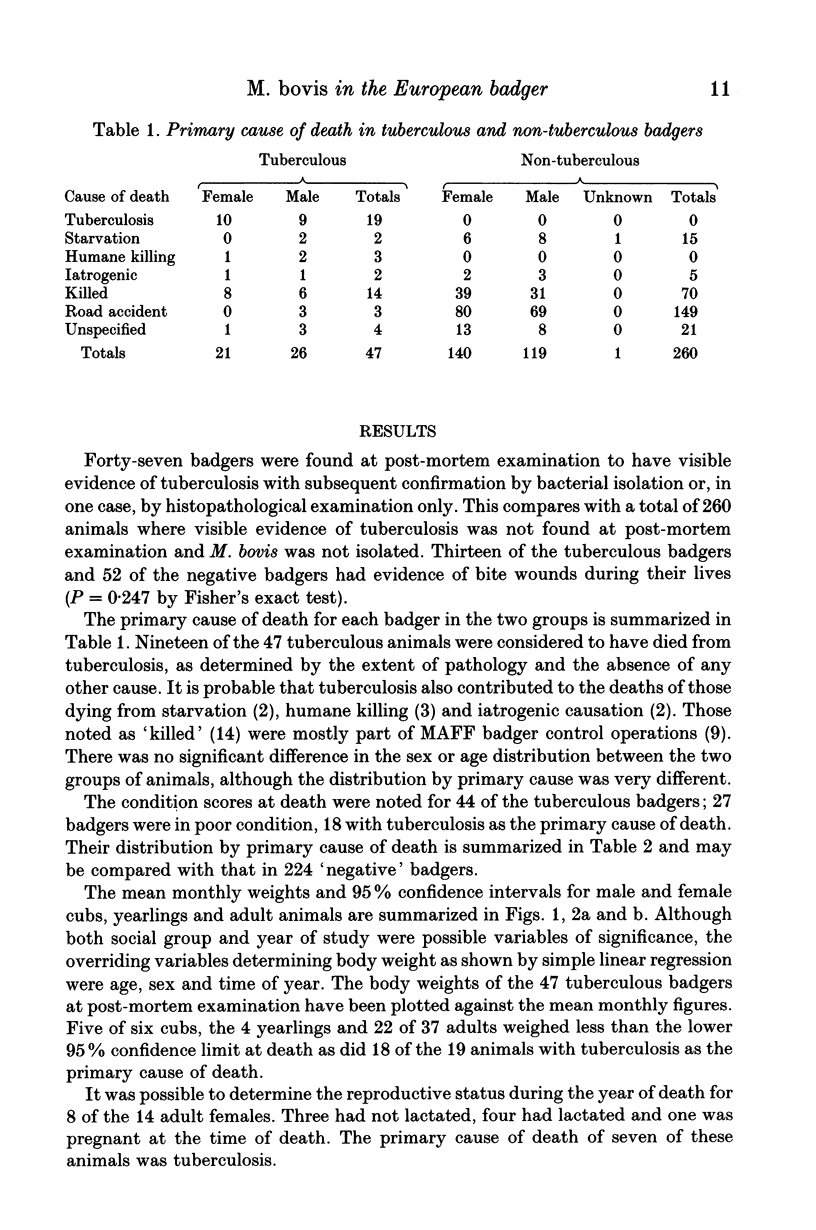
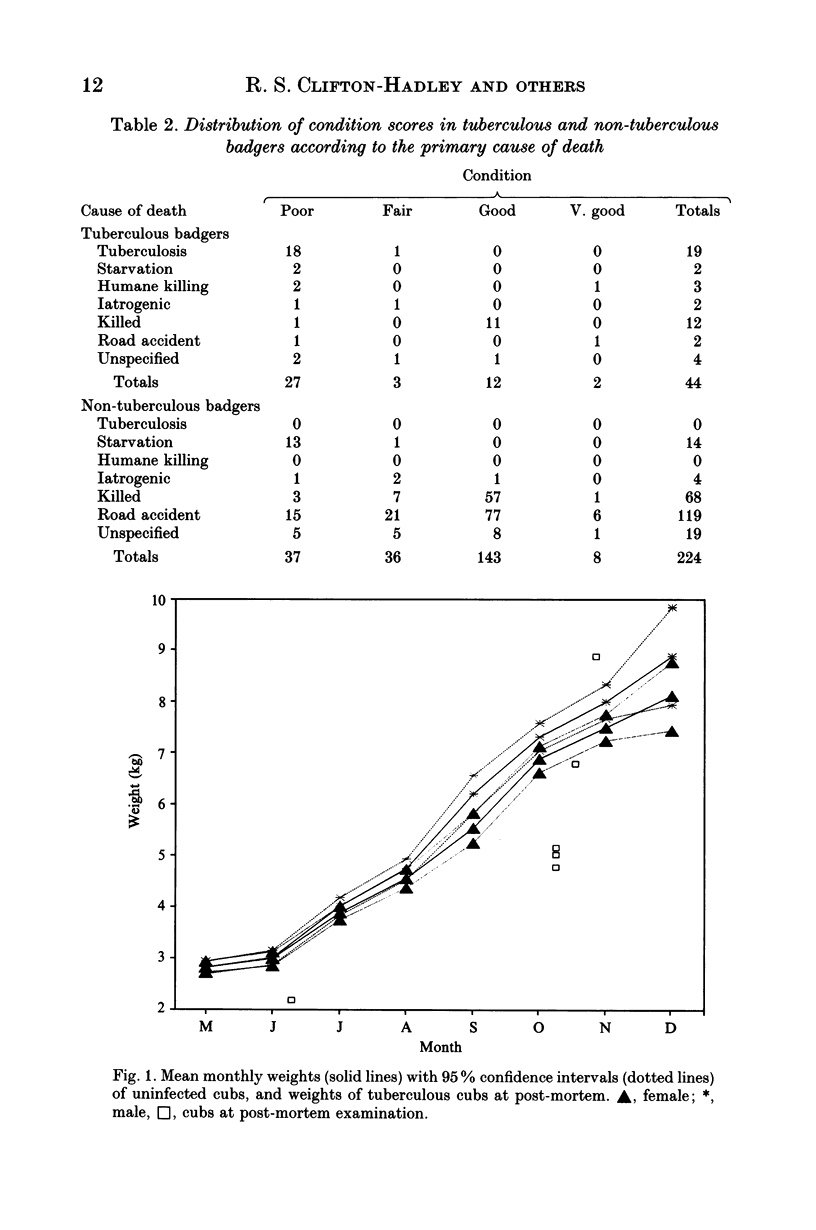
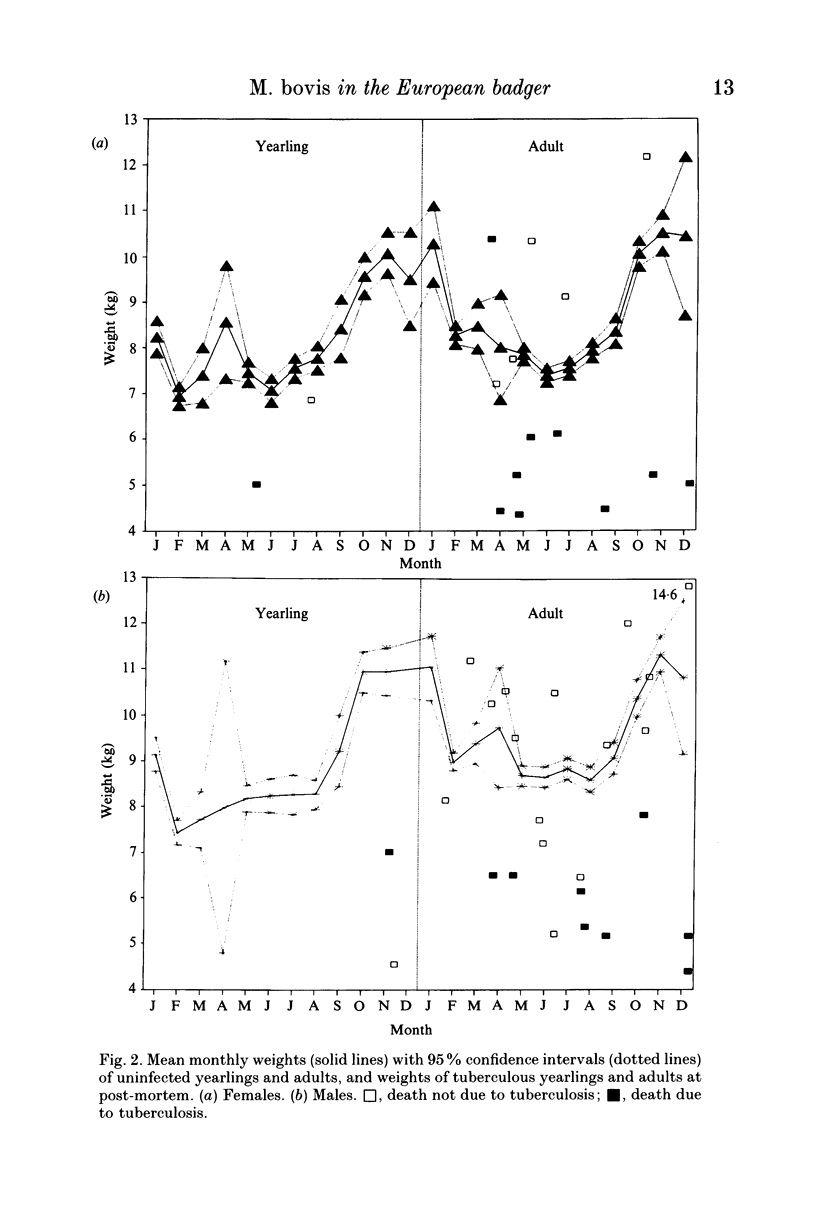
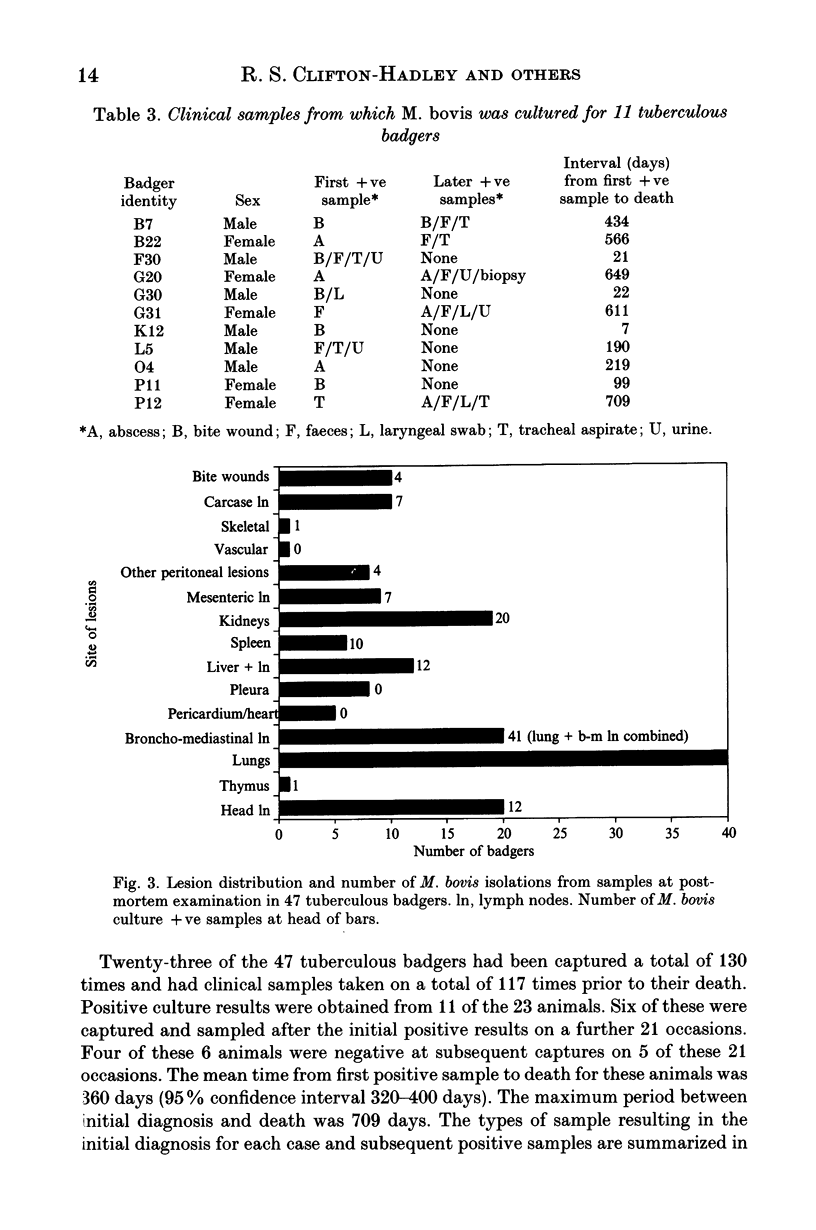
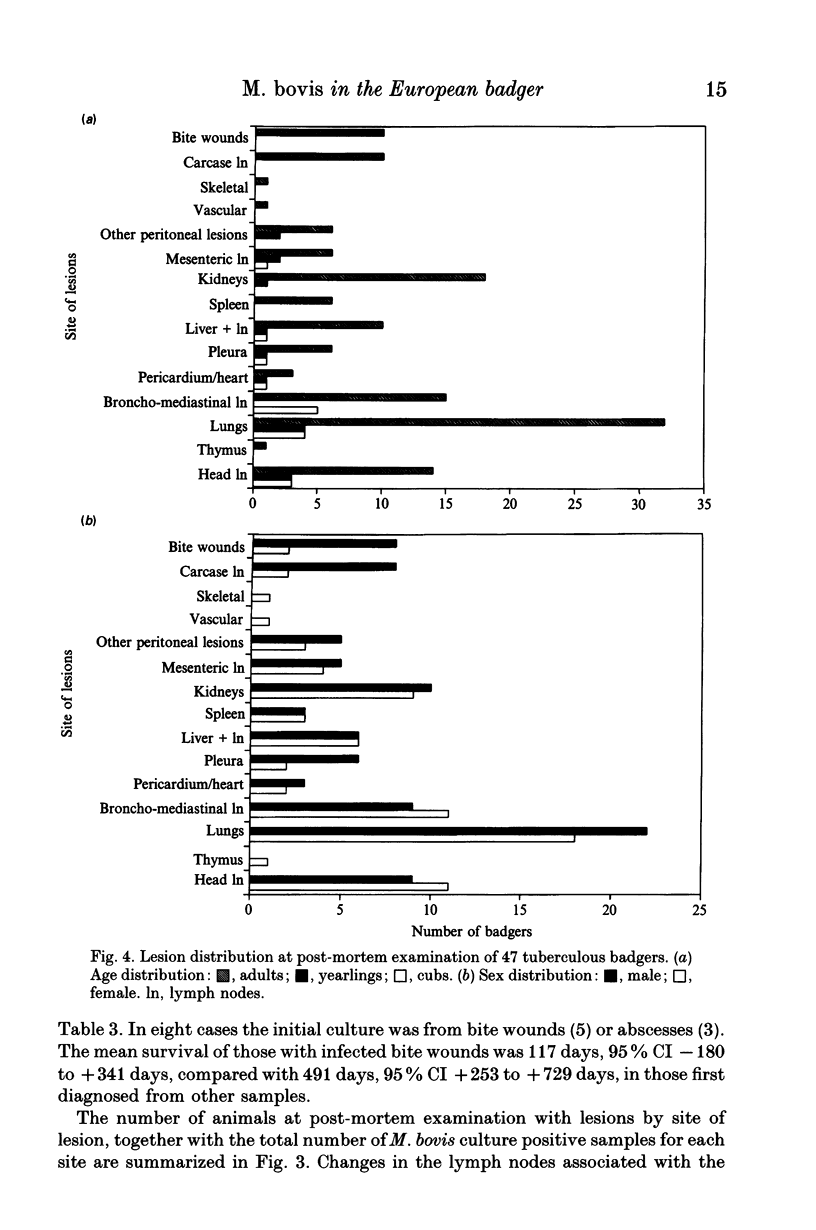

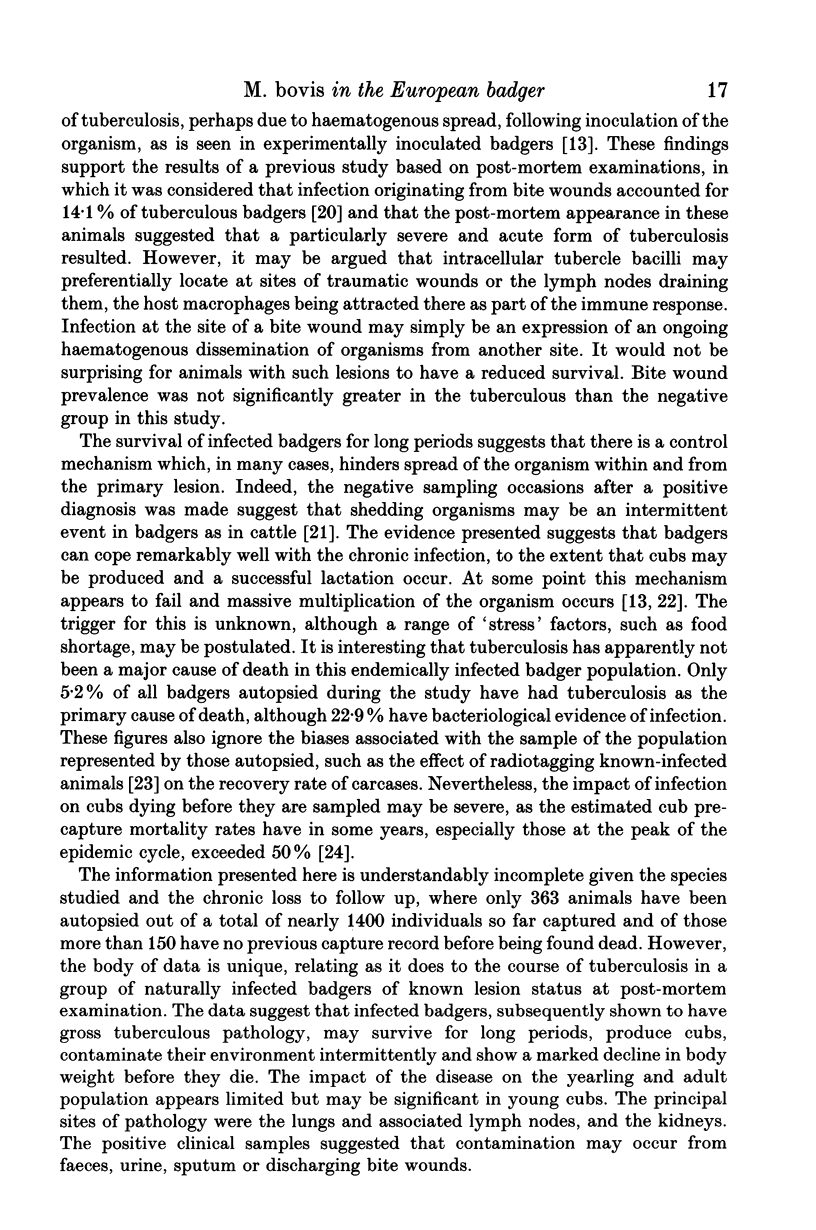
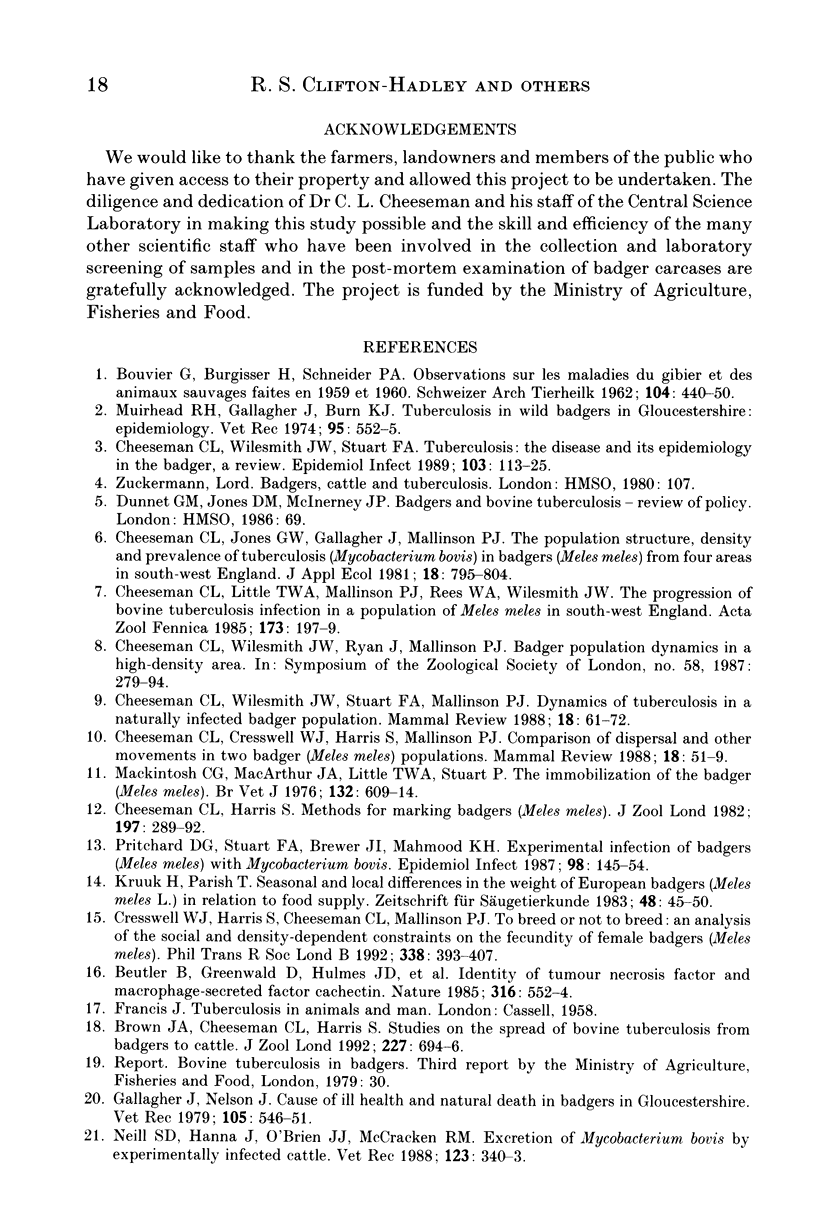
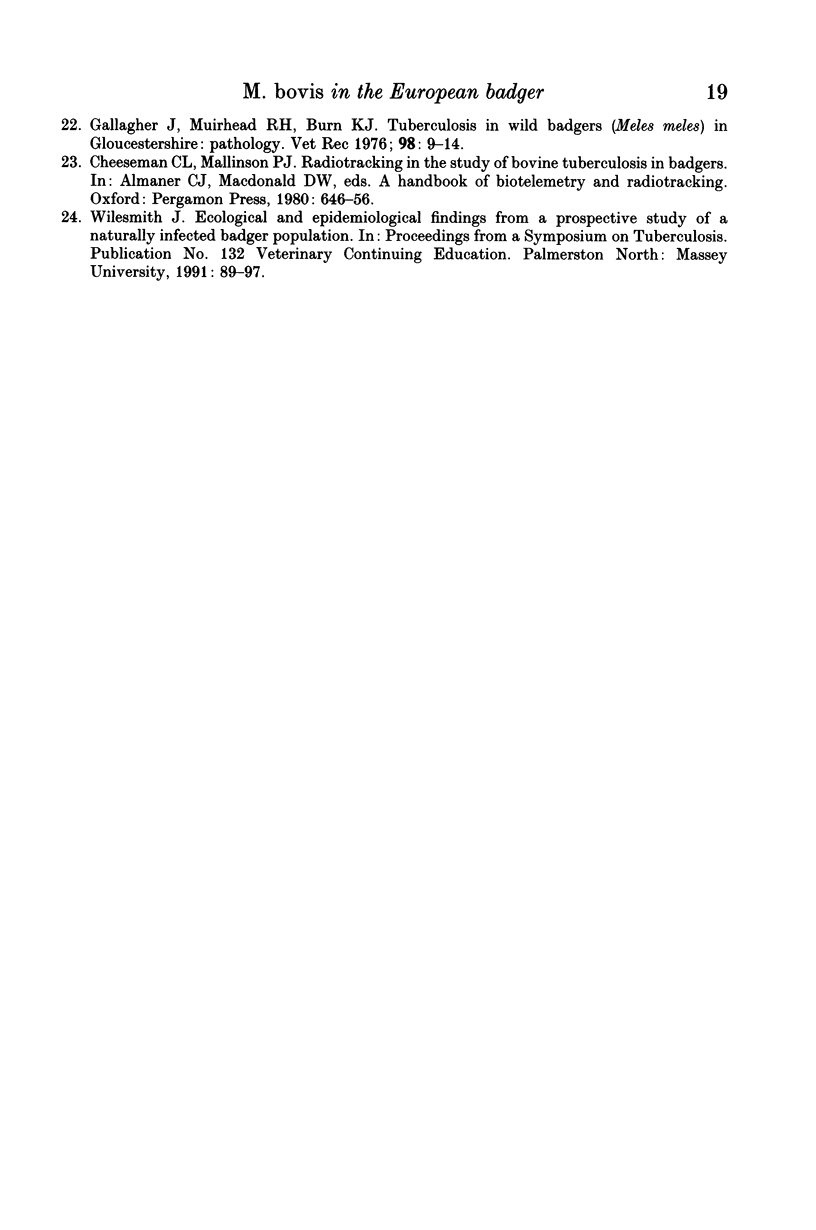
Selected References
These references are in PubMed. This may not be the complete list of references from this article.
- Beutler B., Greenwald D., Hulmes J. D., Chang M., Pan Y. C., Mathison J., Ulevitch R., Cerami A. Identity of tumour necrosis factor and the macrophage-secreted factor cachectin. Nature. 1985 Aug 8;316(6028):552–554. doi: 10.1038/316552a0. [DOI] [PubMed] [Google Scholar]
- Cheeseman C. L., Wilesmith J. W., Stuart F. A. Tuberculosis: the disease and its epidemiology in the badger, a review. Epidemiol Infect. 1989 Aug;103(1):113–125. doi: 10.1017/s0950268800030417. [DOI] [PMC free article] [PubMed] [Google Scholar]
- Cresswell W. J., Harris S., Cheeseman C. L., Mallinson P. J. To breed or not to breed: an analysis of the social and density-dependent constraints on the fecundity of female badgers (Meles meles). Philos Trans R Soc Lond B Biol Sci. 1992 Dec 29;338(1286):393–407. doi: 10.1098/rstb.1992.0157. [DOI] [PubMed] [Google Scholar]
- Gallagher J., Muirhead R. H., Burn K. J. Tuberculosis in wild badgers (Meles meles) in Gloucestershire: pathology. Vet Rec. 1976 Jan 3;98(1):9–14. doi: 10.1136/vr.98.1.9. [DOI] [PubMed] [Google Scholar]
- Gallagher J., Nelson J. Cause of ill health and natural death in badgers in Gloucestershire. Vet Rec. 1979 Dec 15;105(24):546–551. [PubMed] [Google Scholar]
- Mackintosh C. G., MacArthur J. A., Little T. W., Stuart P. The immobilization of the badger (Meles meles). Br Vet J. 1976 Nov-Dec;132(6):609–614. doi: 10.1016/s0007-1935(17)34537-2. [DOI] [PubMed] [Google Scholar]
- Murhead R. H., Burns K. J. Tuberculosis in wild badgers in Gloucestershire: epidemiology. Vet Rec. 1974 Dec 14;95(24):552–555. doi: 10.1136/vr.95.24.552. [DOI] [PubMed] [Google Scholar]
- Neill S. D., Hanna J., O'Brien J. J., McCracken R. M. Excretion of Mycobacterium bovis by experimentally infected cattle. Vet Rec. 1988 Sep 24;123(13):340–343. doi: 10.1136/vr.123.13.340. [DOI] [PubMed] [Google Scholar]
- Pritchard D. G., Stuart F. A., Brewer J. I., Mahmood K. H. Experimental infection of badgers (Meles meles) with Mycobacterium bovis. Epidemiol Infect. 1987 Apr;98(2):145–154. doi: 10.1017/s0950268800061859. [DOI] [PMC free article] [PubMed] [Google Scholar]


